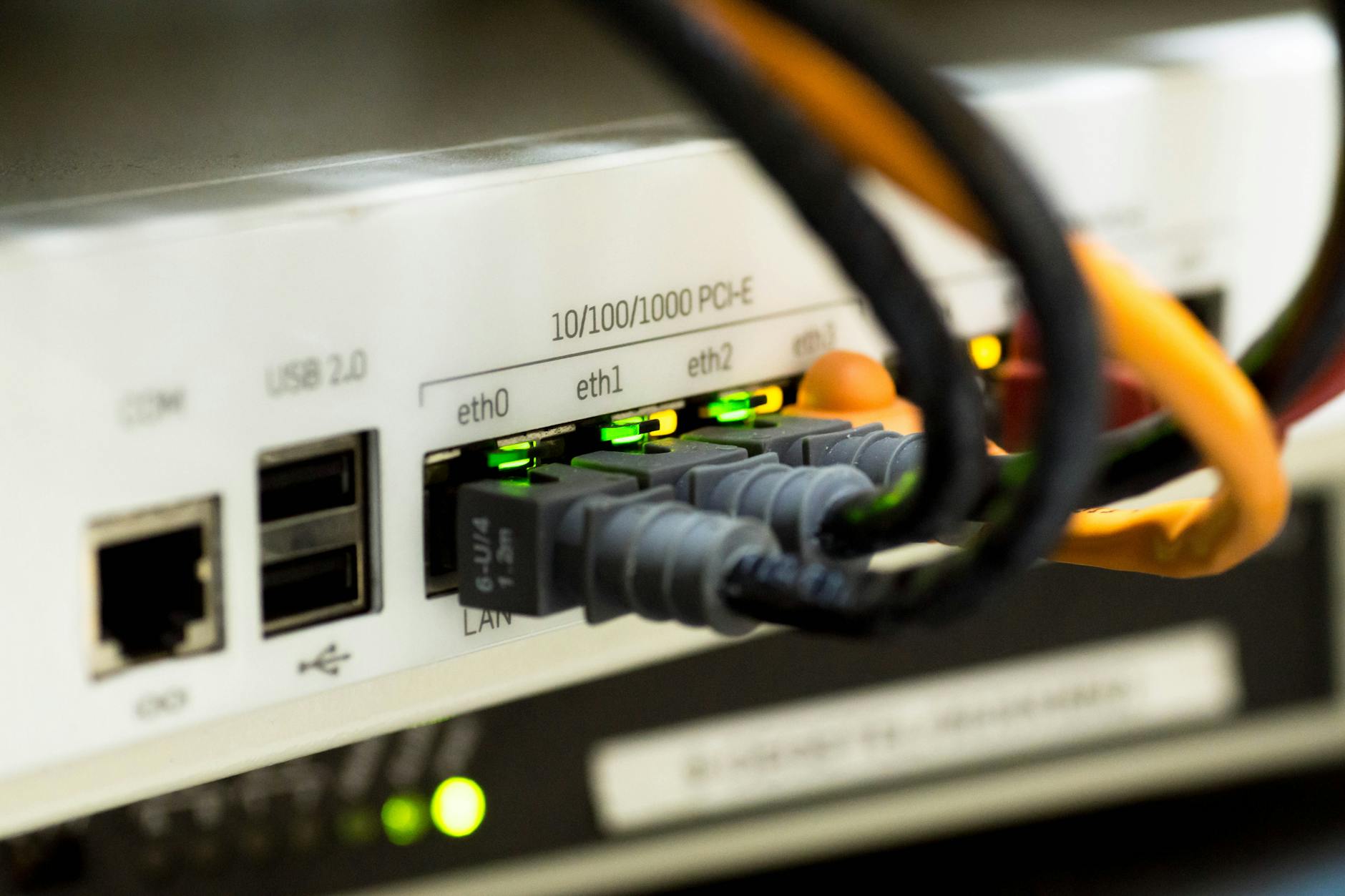THE ULTIMATE GUIDE TO CYBERSECURITY RISK MANAGEMENT

Every organization faces risks in one way or another. These risks can lead to severe data breaches or system failures.
Risk management helps businesses understand these threats and decide how to deal with them.
It involves identifying, assessing, and reducing potential problems before they happen. Through focusing on these steps, companies can better protect their sensitive information and avoid costly surprises.
To grasp how this works, check out our guide on performing a cybersecurity risk assessment. This key component lays the foundation for effective risk management strategies, ensuring your business stays secure.
Cybersecurity Risk Management
Preventing cyber threats is no longer optional, it’s essential. Cyber risk management is like putting on a reflective jacket before walking down a dark road; it ensures you’re visible and safe from harm.
Let’s look into key aspects that make this critical process tick, understand why assessments matter, and check out the tools that help businesses stay one step ahead.
Defining Cybersecurity Risk Management
At its centre, cyber risk management involves taking control of potential threats before they take control of you.
It begins with identifying risks, assessing their potential impact, and deciding the best approach to handle them. This process is not just a one-time task, it’s an ongoing effort to protect an organization’s digital universe.
Key components include:
- Identifying vulnerabilities in your network or software.
- Assessing the probability and impact of cyberattacks.
- Deciding mitigation strategies, from updates to system architecture.
- Monitoring risks consistently and keeping defenses updated.
To make sense of all this, businesses often align with dedicated cybersecurity frameworks like these. Frameworks acts as roadmaps, guiding teams in creating robust risk management strategies.
Importance of Cyber Risk Assessment
Imagine heading into a storm without checking the weather forecast first. That’s basically running your systems without a cyber risk assessment.
It’s your radar, it spots potential issues, predicts their path, and helps you prepare before they cause disaster.
A good risk assessment:
- Identifies threats specific to your assets—like sensitive customer data.
- Reveals weaknesses, such as outdated firewalls or poor password hygiene.
- Prioritizes fixes so you can focus on the most critical vulnerabilities first.
Taking these steps allows organizations to head off possible incidents. Follow this guiding blueprint for risk assessment, check out why cybersecurity is non-negotiable for businesses.
Tools for Cyber Risk Management
Tools are the foundation of any strong cyber defense system. Tools are like the guardians of your digital fortress.
Here’s a breakdown of the most widely-used ones and what they do:
- Vulnerability Scanners: Find weak points in your systems so you can patch or fix them before hackers exploit them.
- Intrusion Detection Systems (IDS): Like security cameras for your network, they flag suspicious activity in real-time.
- Risk Management Platforms: Centralized systems for tracking vulnerabilities, reporting risks, and managing mitigation plans.
- Encryption Tools: Safeguard sensitive data, ensuring that only authorized individuals can access it.
- Threat Intelligence Platforms: Use machine learning to monitor global cyber threats and alert users when suspicious actors are on the move.
Remember, deploying tools is not just buying the software, it includes learning how these tools integrate and protecting all aspects of your business.
To learn more about the mechanics of staying ahead, see prevention guides like IoT security tactics.
Through using a combination of assessments, strong frameworks, and powerful tools, businesses can keep their risks manageable and their operations safe.
Start small—monitor, assess, act, and you’ll soon see the payoff in trust and safety.

Photo by Pixabay
Through understanding threats and how to handle them, you’re already way ahead on the road to a safer digital future.
Cyber Threat Assessment
Handling cyber threats feels a lot like bracing for a thunderstorm; you need a clear strategy to stay protected. Cyber Threat Assessment is an essential part of your risk management routine.
It ensures you’re not playing catch-up when attackers strike. Through staying one step ahead, you can identify weaknesses, understand the risks, and create strong defenses.
Steps in Cyber Threat Assessment
Conducting a cyber threat assessment involves a systematic process. These steps help you understand and mitigate risks effectively:
- Identify Critical Assets: Determine which systems, data, or devices hackers are most likely to target.
- Pinpoint Threats: Analyze which specific risks are relevant to your business, such as phishing, ransomware, or insider threats.
- Assess Vulnerabilities: Highlight weak spots in your current systems and evaluate how they might be exploited.
- Evaluate Risks: Combine the likelihood of threats with the potential impact to prioritize which areas need immediate attention.
- Formulate a Response Plan: Create actionable steps to address the most significant risks, including short- and long-term solutions.
- Review Regularly: Cyber threats evolve, so assessments need to adapt constantly.
Want to dig deeper? Our article on Cyber Threat Intelligence gives a great overview of staying informed about potential threats.
Identifying Vulnerabilities
Vulnerabilities are like the cracks in a dam. If left unchecked, these cracks could quickly turn into massive breaches.
Identifying flaws in your systems is essential to reinforce these gaps before they turn into liabilities.
Here’s how vulnerabilities are typically identified:
- Automated Scanners: Tools scan your network for weak points, such as unpatched software or exposed ports.
- Penetration Testing: Ethical hackers simulate real-world attacks to find exploitable vulnerabilities.
- Access Reviews: Periodically review user permissions to ensure no one has unauthorized access to sensitive systems.
- Security Audits: In-depth evaluations of your governance, processes, and configurations.
Through strengthening these weak links, you’re effectively cutting off entry points for attackers. Interested to learn more? Start crafting better defenses with these tips in our article on security strategy essentials.

Photo by Tima Miroshnichenko
Threat Intelligence Sources
Utilizing reliable threat intelligence sources equips your team with actionable information to prepare for new attacks. These sources shed light on emerging threats and allow you to take preemptive measures.
Some trusted places to gather threat intelligence:
- Open Threat Feeds: Free platforms like AlienVault provide real-time insights into ongoing cyber activity.
- Government and Industry Initiatives: Websites such as CISA share compiled information about cyber risks at a broader level.
- Dedicated Security Tools: Platforms such as Fortinet Cyber Threat Assessments offer in-depth evaluations tailored to your enterprise.
- Crowdsourced Reports: Technology communities and forums often share collective knowledge regarding vulnerabilities and exploits.
- Internal Logs: Your company’s own monitoring data can provide unique insights into patterns of attempted intrusions.
No single source tells the entire story. The key is combining these resources to get a clearer picture of the cyber threat environment, helping you act decisively before issues escalate. For more tailored approaches, check out this startup-focused cybersecurity guide.
Risk Mitigation Strategies
Risk management involves identifying threats and taking action to minimize or eliminate them.
Risk mitigation strategies help your business reduce potential threats and ensure a clear game plan for dealing with risks as they arise.
Let’s look at some key approaches.
Implementing Security Controls
Effective security controls are the backbone of any good risk mitigation plan. These controls could be physical, technical, or administrative and are put in place to prevent unauthorized access, protect your data, and monitor activities within your system.
- Firewall Configurations: Firewalls are like the entry gates. Through configuring them correctly, they block unauthorized access while letting the right traffic in.
- Access Control Systems: Only authorized persons should have access to sensitive areas of your systems. Tools like multi-factor authentication (MFA) enhance security by adding extra steps to verify user identities.
- Encryption: Encrypting data ensures that even if malicious actors get their hands on critical information, they cannot decipher it without the required key.
- System Monitoring: Install intrusion detection systems to keep a watchful eye on your networks in real-time.
It’s worth exploring more about cyber defenses in our Creating Effective Information Security Policies blog for additional insights.
Employee Training and Awareness
People are often the weakest link in security chains, but they don’t have to be. Regular employee training turns this vulnerability into strength. Why? Because a well-trained team can identify risks and take relevant actions before threats escalate.
How should you do it? Focus on these:
- Phishing Awareness Programs: Teach your team how to spot malicious emails and avoid clicking suspicious links.
- Secure Password Practices: Emphasize creating unique, strong passwords and changing them regularly.
- Report and Respond: Train staff on how to report unusual activities quickly and safely handle breaches.
- Simulated Scenarios: Periodic mock drills ensure the team’s readiness for dealing with potential cyber threats.
To protect operations, these drills and training sessions must be an integral part of organizational protocols.
You can read more on how automation and modern tools also play an essential role through our AI Powered Threat Detection Solutions.
Regular Risk Reviews
Cyber threats change daily. Ignoring this can be like leaving a door unlocked. Regular updates and reviews of your risk management strategy ensure you stay ahead of evolving threats.
Here’s why they matter:
- Keep Security Tools Updated: A security solution from last year might be outdated today. Regular reviews ensure your tools meet current standards.
- Adjust for New Risks: As your organization grows, new risks emerge. Maybe you introduced a remote work policy—your reviews should reevaluate risks tied to it.
- Patch Weaknesses Quickly: Identify and fix weaknesses before they snowball into problems.
- Measure Effectiveness: See what’s working and what isn’t by analyzing past incidents and current threat landscapes.

Photo by Artem Podrez
Regularly reviewing strategies, training staff, and implementing controls empower you to handle risks in the now, before they become costly problems you tackle later.
Cyber Incident Response
In the unpredictable world of cybersecurity, incidents are a matter of ‘when,’ not ‘if.’ That’s why having a solid cyber incident response strategy is critical.
It’s your safety net, ensuring swift action to minimize chaos and loss when the unexpected happens.
Let’s break down the essentials of preparing, responding, and learning from incidents.
Developing an Incident Response Plan
An incident response plan is like a well-rehearsed fire drill for your organization. It guides your team through the chaos of a security breach and helps you regain control faster.
Here are the key components every plan should include:
- Immediate Response Steps: Define what happens first (e.g., isolating impacted systems, notifying teams).
- Roles and Contact Details: Who is in charge? Make sure everyone knows their role and how to reach key personnel.
- Inventory of Critical Assets: Identify which systems and data need priority protection.
- Detection Mechanisms: Include detail on how to monitor and detect unusual activity quickly.
- Communication Plans: Decide who needs to be informed internally and externally (e.g., customers, stakeholders).
- Documentation Guidelines: Create clear templates for recording every action during an incident.
- Containment Procedures: Steps to limit the damage and stop attackers from spreading deeper.
- Restoration and Recovery Steps: Include detailed actions to restore systems securely without rushing back online and risking further harm.
Roles and Responsibilities
Picture your incident response team like the crew of a ship navigating stormy seas, each member has a role, and success depends on seamless coordination.
Here’s a simplified breakdown of who should be involved and their responsibilities:
- Incident Commander: They lead the response, ensuring decisions are made quickly and confidently.
- IT Team: Manages the technical aspects, such as isolating affected systems and restoring backups.
- Security Analysts: Investigate the incident’s root cause and assess the scope of the breach.
- Legal Counsel: Ensures compliance with regulations and provides guidance for communications.
- Communications Specialist: Manages public-facing messages, ensuring clear and timely updates for stakeholders.
- Human Resources (if necessary): Addresses incidents involving internal personnel or insider threats.
Creating a capable team starts with roles that address real risks.
Post-Incident Analysis
Every breach is a learning opportunity. If you skip a post-incident review, you’re leaving vital lessons untapped.
Post-Incident Analysis is like watching the game footage after a big loss, you analyze what went wrong to prevent future mistakes.
Here’s why post-incident analysis is essential:
- Identify Weaknesses: Figure out exactly how attackers got in and shut that door before anyone else sneaks through.
- Evaluate Your Response: Did your team follow the plan? Where could you be faster or more effective?
- Cost Analysis: Understand the full financial impact—lost revenue, downtime, data recovery costs, etc.
- Update Policies: Adjust your response plan based on what you’ve learned to handle incidents even better next time.
Through focusing on preparation, sharp teamwork, and consistent learning, companies can become far more resilient against cyber incidents.
Is your organization ready for the unexpected?

Photo by Alexander Zvir
Cyber Threat Resilience
Every organization needs secure defenses, but what happens when breaches occur?
That’s where cyber threat resilience steps in, ensuring you have the strength and flexibility to recover from attacks with minimal harm.
Importance of Cyber Threat Resilience
Cyber threat resilience is no longer a luxury, it is a necessity. The current cyber landscape is a wild west of hackers and vulnerabilities.
Organizations face constant risks, from ransomware to phishing attacks. If you can’t bounce back quickly, the aftermath can be costly.
Here’s why it’s critical:
- Minimized Downtime: When attacks happen, resilience ensures operations don’t grind to a halt.
- Protected Reputation: Quick recovery shows customers that you value their trust and data.
- Cost Savings: Recovering fast might save millions in breach-related expenses.
Cyber resilience is not just the protection, it’s a mindset. It’s like wearing a helmet on a bike ride. Accidents may happen, but it keeps the damage to a minimum.
Adaptive Security Measures
Hackers constantly evolve their tactics, so security solutions must evolve with them. Adaptive security measures are like chameleons, they change based on the threat, staying one step ahead.
Top strategies include:
- Zero Trust Models: Trust no one—verify everyone trying to gain access.
- AI-Powered Threat Detection: Artificial intelligence monitors for unusual patterns that could signal an attack.
- Dynamic Privilege Management: Limit user permissions based on role and necessity.
- Secure Backup Protocols: Ensure data backups are frequent, encrypted, and stored in diverse locations.
Through adopting dynamic approaches, organizations can respond faster to emerging risks.
Continuous Monitoring and Improvement
Would you leave a car without a security alarm in a high-risk area? Continuous monitoring is the alarm system of your digital space, always alert for threats. It catches disturbances in real-time, saving businesses from full-blown disasters.
Here’s what makes monitoring essential:
- Real-Time Alerts: Any irregular behavior triggers alarms for a quick response.
- Routine Vulnerability Scans: Regular scans uncover weak points before they’re exploited.
- Employee Activity Reviews: Keeps tabs on unusual login attempts or unauthorized access.
- Performance Metrics: Ongoing analysis ensures protection tools are working efficiently.
However, monitoring shouldn’t stop there, it needs constant refining. Threats evolve, and so should your defenses.
Through building adaptive defenses and staying vigilant, businesses create a type of digital immune system.
This system ensures that when threats arise, damage is limited, and recovery is swift. Investing in resilience today could save your company tomorrow.
Final Thoughts
Risk management is a cornerstone in sailing through today’s challenges, ensuring threats are understood and mitigated effectively.
Through identifying potential risks, crafting strategies, and staying vigilant, businesses can shield themselves from unforeseen disruptions.
Building robust frameworks, promoting organizational awareness, and using the right tools form the backbone of a strong risk management strategy.
Armed with these practices, organizations are not only prepared for challenges but can also seize opportunities that otherwise might have been overshadowed by uncertainty.
Stay proactive and informed, implementing comprehensive risk strategies leads to smoother operations and greater peace of mind.
Don’t let your business become a hacker’s playground. Partner with Cyb-Uranus today and empower your start-up or SME with cutting-edge cybersecurity solutions tailored to your unique needs
Subscribe to our newsletter to stay updated with the latest techniques and strategies to keep your operations safe and efficient!

